#Sanford Archaeological District
Photo

Throwback Thursday - Robert "Ernie" Boszhardt excavating an Oneota vessel at the Sanford Archaeological District in La Crosse, Wisconsin, summer 2001.
(Photo contributed by J. Theler.)
#archaeology#archeology#Sanford Archaeological District#Oneota#Pottery#Ceramics#Oneota pottery#Oneota ceramics
15 notes
·
View notes
Photo

Throwback Thursday - Susan Motschman excavating a mussel shell deposit at the Sanford Archaeological District in April 1991.
Susan served on MVAC's Board of Directors for over ten years and was also the first chair of MVAC's Education Committee. Her advocacy for and support of archaeology outreach were outstanding. Susan was enthusiastic and creative in her drive to find funding for outreach activities. She brought together committee members and community leaders to develop ways to fund the design and implementation of activities and services that have become hallmarks of MVAC's outreach program. MVAC’s 2004 Archaeology Education Award was awarded to Susan Motschman posthumously.
(Photo contributed by J. Theler.)
13 notes
·
View notes
Photo
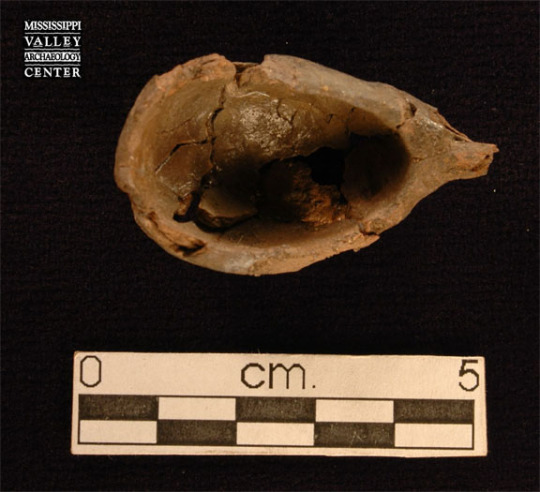
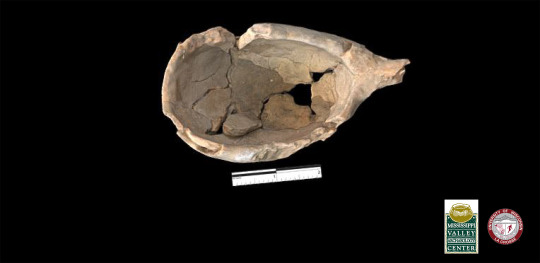
This small, spoon-like vessel made of fired clay was found during excavations at an Oneota site in the Sanford Archaeological District in La Crosse, Wisconsin, in the early 1990s. Such spoons are extremely rare in the area. Fragments of a similar spoon have also been found at an Oneota site in Onalaska.
Link to 3D image: https://sketchfab.com/3d-models/ceramic-spoon-oneota-culture-la-crosse-co-wi-da9ffef1babb496d8fa1de75e1a9320a
3D scan courtesy Dr. David A. Anderson, Associate Professor, UWL, Department of Archaeology & Anthropology.
#archaeology#archeology#ceramic spoon#ceramic spoon-like vessel#Sanford Archaeological District#Dr. David A. Anderson
3 notes
·
View notes
Photo

Throwback Thursday – April 1991 – Excavating Oneota features during urban redevelopment in the Sanford Archaeological District, La Crosse, Wisconsin. (Photo contributed by J. Theler.)
6 notes
·
View notes
Photo

This Oneota vessel was found in the early 2000s in an storage/refuse pit at the Sanford Archaeological District in La Crosse, Wisconsin. In profile the pit was flat bottomed with contracting walls. The design on the vessel fits a type called Brice Prairie Trailed that is most common in the earliest phase of the Oneota occupation of La Crosse: the Brice Prairie phase, ca. A.D. 1300–1400. The impressions on the interior of the lip are characteristic of Brice Prairie phase vessels. The shoulder looks as though it has round punctates above tool trails, but the round holes are actually the tops of “stab and drag” trails, where the tool was pushed into the top of the shoulder and then dragged downward. Charred plant remains from the pit yielded a corrected and calibrated radiocarbon date of A.D. 1387–1444 (70%, UGA 01751).
#archaeology#archeology#Oneota#Oneota pottery#Oneota vessel#Oneota ceramics#Sanford Archaeological District#ceramics#vessel#Brice Prairie
12 notes
·
View notes
Photo
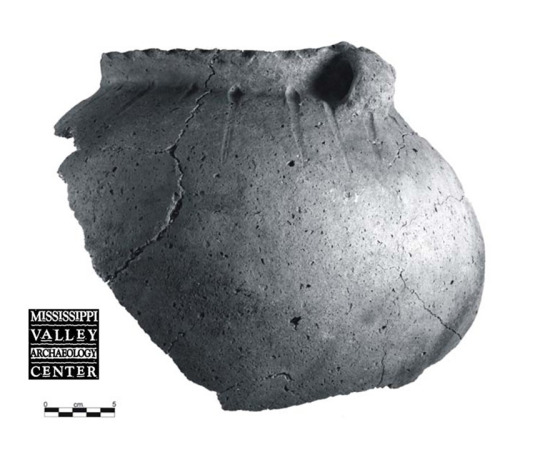
This large vessel section, called Vessel 108, was found in the early 2000s during excavations in the Sanford Archaeological District in La Crosse, Wisconsin. This late precontact Oneota site was inhabited during all three phases of the local Oneota occupation. Vessel designs and decorations provide clues to an Oneota vessel’s age. The rim of Vessel 108 has bold notching on the lip top to exterior lip, and the shoulder has a probable Pammel Creek Trailed motif of vertical finger trails. The trails begin at the top of the shoulder and are wide at the top, trailing off to nothing by the break in the shoulder. The vessel also has an undecorated strap handle attached just below the lip and a short rim height of 33.6 mm. The design and decoration—especially the bold impressions on the lip—are characteristic of the Pammel Creek phase (ca. AD 1400–1500), the middle phase of the Oneota occupation.
#archaeology#archeology#Oneota#ceramics#pottery#Oneota ceramics#Oneota pottery#Sanford Archaeological District#Pammel Creek Trailed
10 notes
·
View notes
Photo

Oneota Vessel 69 was recovered during excavations in the early 2000s at the Sanford Archaeological District in La Crosse, Wisconsin. Vessel 69 has nested chevrons below a shallow cross. An oblique tool trail panel is present on one side of the chevrons; the other side is broken off. This vessel does not have a corresponding rim. A mend hole is in the upper left.
5 notes
·
View notes
Photo

This unusual, etched square of sandstone was found in the early 2000s during excavations at the Sanford Archaeological District in La Crosse, Wisconsin. A piece of local sandstone was shaped and smoothed to form a small, flat square, and an asterisk (*) design was etched into one surface. The Sanford District is a large Oneota habitation and cemetery site that underlies some 26 city blocks of South La Crosse. The site dates to late precontact times, from about AD 1300 into the early 1600s.
11 notes
·
View notes
Photo

Vessel 80 is a small, globular miniature vessel only 3 cm (about an inch) in diameter. The rim interior has what were probably intended to be nested chevrons, although not all of them meet. The chevrons were made with a fine tool. The rim exterior has fingernail impressions encircling the bottom. The shoulder is decorated with fine, vertical tool trails. Vessel 80 was recovered during excavations in the early 2000s at the Sanford Archaeological District in La Crosse, Wisconsin.
4 notes
·
View notes
Photo

Vessel 44 is a Midway Incised variety lip top narrow vessel recovered during excavations in the early 2000s at the Sanford Archaeological District in La Crosse, Wisconsin. It was found in a zone containing a pottery cluster within a large, circular (190 × 180 cm, approximately 6 feet), basin-shaped pit. This large Oneota vessel, 18.5 cm diameter (7 ¼ inches) (over 20 percent of the rim present), has a broad strap handle attached at the lip and three vertical finger trails.
7 notes
·
View notes
Photo
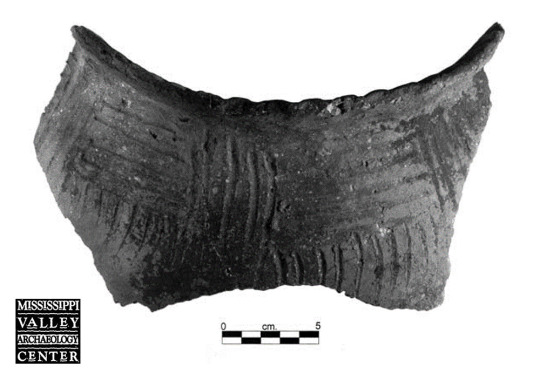
This Oneota vessels has a “goal post” design consisting of alternating panels of vertical and horizontal tool trails with punctate borders. Recovered during excavations in the early 2000s at the Sanford Archaeological District in La Crosse, Wisconsin.
9 notes
·
View notes
Photo

This well-preserved hoe is made from the left scapula (shoulder blade) of an adult elk. The blade is worn, rounded, and polished from use as a hoe. The hole punched or chipped through the center is worn along the edges, indicating fiber processing or a similar secondary use. Hoes made from bison or sometimes elk scapulae are found at Oneota sites in the La Crosse area that date from about A.D. 1300 into the early 1600s. This example was found at the Sanford Archaeological District in La Crosse, Wisconsin, in the early 2000s.
11 notes
·
View notes
Photo

The paste and form of this vessel is consistent with La Crosse Oneota pottery; however, the rim and the decorative motif do not fit the typical pattern. This vessel has a typical Perrot Punctate motif, but the rim is decorated on the lip top. The impressions on the rim are circular rather than notches. Vessel 55 was recovered during excavations in the early 2000s at the Sanford Archaeological District in La Crosse, Wisconsin.
8 notes
·
View notes
Photo
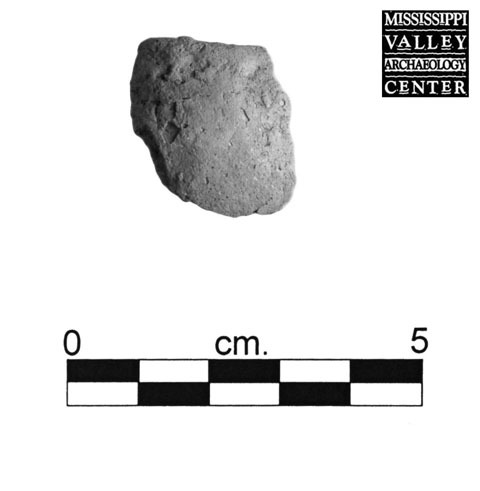
This miniature vessel portion was found in the early 2000s at the Sanford Archaeological District in La Crosse, Wisconsin. It consists of the rim and side of a small pinch pot. The rim is rounded, and both the rim and the body are undecorated. The base of the sherd has the beginning of a curve. The pot would have been about an inch tall.
35 notes
·
View notes
Photo

Whistles made from long bones of large birds (e.g., goose) are sometimes found at local Oneota sites. This short, heavily worked section of bird long bone can probably be classified as a whistle, although its form is unusual. The surface is polished and the two cut ends are smoothed; two oblong holes are cut on opposing sides of the shaft. Recovered during excavations in the early 2000s at the Sanford Archaeological District in La Crosse, Wisconsin.
7 notes
·
View notes
Photo

Vessel 29 was found at the base of an ash lens in an oval storage or refuse pit. This Koshkonong Bold variety bold vessel portion has a distinctive handle attached at the lip. The handle is a loop, flattened on both sides, with bold finger impressions that give it a wavy appearance. The finger impressions on the lip are also bold, as are the vertical finger trails on the shoulder. Vessel 29 was recovered during excavations in the early 2000s at the Sanford Archaeological District in La Crosse, Wisconsin. It probably dates to the Pammel Creek phase (A.D. 1400-1500) of the local Oneota occupation.
4 notes
·
View notes